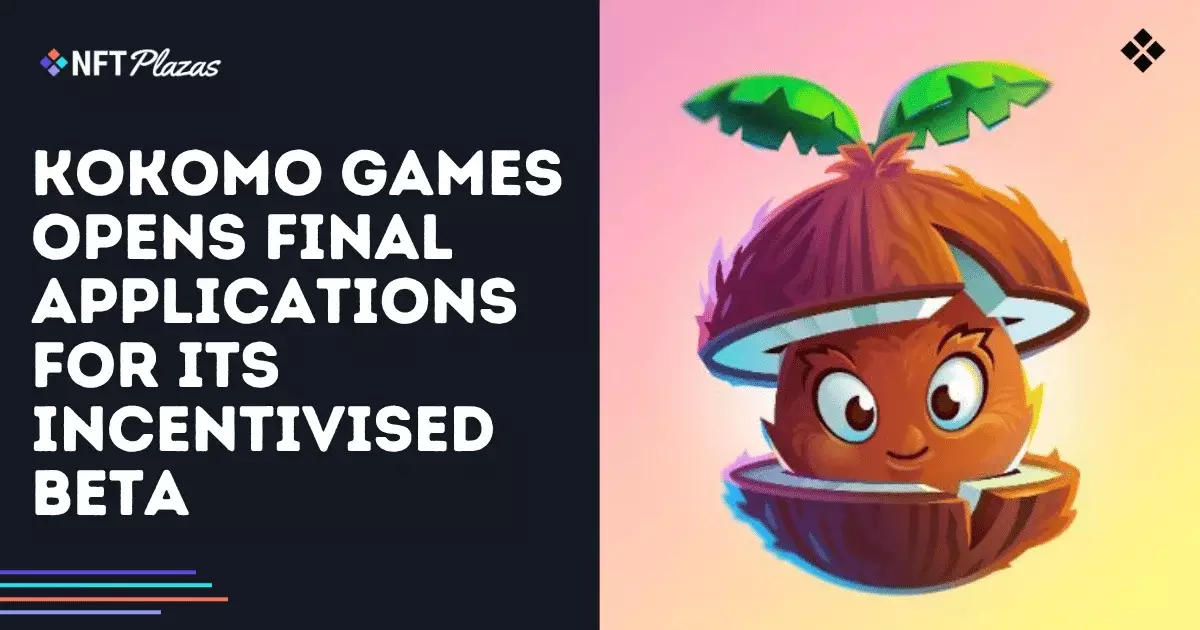The recent buzz surrounding Kokomo Games’ incentivised beta test seems promising on the surface, but a critical analysis reveals a slew of underlying issues that undermine its purported innovation. The gaming community, especially those drawn to blockchain integration, should ask themselves whether this initiative is genuinely pushing the boundaries of gaming or merely rehashing old ideas with a shiny new blockchain coat. While blockchain-powered mini-games might sound innovative, they risk being superficial gimmicks that fail to address core issues of game design integrity and sustainable user engagement.
The hype surrounding early access, pre-funded accounts, and potential rewards creates a compelling narrative. However, these features often overshadow the fact that the game ecosystem Kokomo Games is developing remains in its infancy, with core functionalities still undefined or underdeveloped. The promise of future token rewards and NFTs may attract participants temporarily, but what does it truly mean for the long-term viability of this platform? It raises a fundamental question—are these incentives enough to compensate for the lack of meaningful gameplay content and the potentially overwhelming complexity of blockchain mechanics, which many casual gamers find daunting and cumbersome?
The Pitfalls of Overreliance on Blockchain and NFTs
Kokomo’s integration of NFTs and blockchain-based currencies into casual gaming raises valid concerns about the sustainability of such a hybrid model. The core premise seems to hinge heavily on explosive tokenomics, NFT utility, and the lure of financial incentives. Yet, the gaming community has seen multiple projects overhyped for their blockchain features, only to fizzle out when gameplay fails to meet expectations or when the economic models collapse under market volatility.
This approach risks alienating the broader gaming audience, which values seamless, fun, and engaging experiences over the possibility of earning crypto rewards. Many gamers see blockchain elements as add-ons that complicate gameplay rather than enhance it. Kokomo’s strategy to incentivise players through token pre-sales, exclusive NFT collections, and governance rights might sound appealing to crypto enthusiasts, but it ignores what really matters: quality gameplay and genuine entertainment. If the core experience is shallow, no amount of digital collectibles or financial incentives will create lasting engagement.
The Flawed Promises of Early Access and Beta Testing
While beta tests traditionally serve as essential tools for refinement and community feedback, they often become glorified marketing stunts, especially in the blockchain gaming sphere. Kokomo’s beta promises “early access” to a prototype version of their ecosystem, including mini-games like Snake, Chess, Blackjack, and Arrow Racer. However, these are classic, well-established games with long histories—nothing groundbreaking here. The question arises: what truly innovative has Kokomo achieved so far, or are they simply repackaging familiar titles with a blockchain twist?
Moreover, the dissemination of pre-funded accounts—intended to give players a taste of the platform—may lead to skewed feedback that’s more about testing financial mechanics than gameplay quality. Partial reward mechanisms, whose details remain vague, threaten to turn these early testing phases into contests for crypto prizes instead of opportunities to develop engaging, well-balanced games. This environment risks prioritizing short-term community hype over meaningful development, setting a dangerous precedent for the industry.
A Token, NFTs, and Community Engagement—A Risky Cocktail
The launch of the Kokomons NFTs, coupled with the promise of staking and governance, underscores an overhyped attempt at creating a loyal ecosystem. Yet, from a critical perspective, such features often serve as superficial hooks that distract from the real challenge—delivering a high-quality gaming experience that sustains user interest beyond the initial hype. The focus on a native token, $KOKO, and scheduled airdrops appear more like economic strategies designed to pump interest rather than build a coherent and user-friendly gaming environment.
Community engagement campaigns and social giveaways, while beneficial for visibility, do little to compensate for the underlying lack of substantive content within the games. If anything, they risk fostering an ecosystem driven more by speculation than by love for casual gaming. Moreover, the limited scope of the current playable features belies the complexity of establishing a truly immersive and enjoyable ecosystem. Until Kokomo demonstrates that core gameplay mechanics are compelling and accessible, the entire project remains brittle—the kind of venture that could easily crumble under market or community pressure.
The Mirage of Blockchain-Driven Gaming Future
Ultimately, Kokomo’s beta attempts to create a bridge towards Web3 gaming, but it appears increasingly to be a mirage. The promise of a fully functional, engaging browser-based mini-game platform integrated with NFTs and tokens simplifies the vast challenges involved in creating sustainable blockchain gaming ecosystems. The hype around early access and incentivised testing merely masks the reality: that the industry’s obsession with blockchain integration often neglects what makes good games truly enjoyable—design integrity, balance, and long-term engagement.
While innovative in concept, this approach risks becoming another example of the blockchain gaming bubble—an overhyped phenomenon that fails to deliver meaningful entertainment. The true test lies not in flashy NFTs or tokenomics but in whether these developments can elevate the gaming experience beyond superficiality. Until then, Kokomo’s beta remains an ambitious yet unsettled experiment—more reflective of industry hype than of genuine innovation.


Leave a Reply